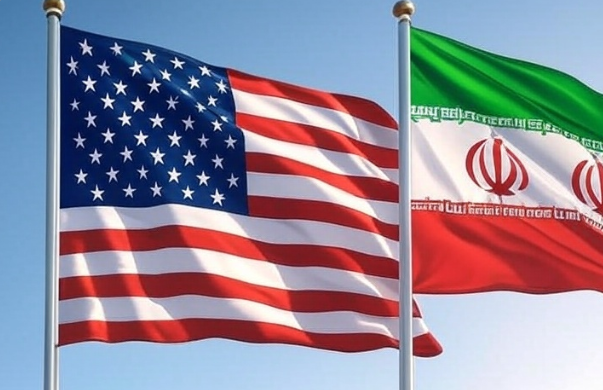US-Iran Nuclear Talks:The blog explores the latest developments in the US-Iran nuclear talks, focusing on the upcoming sixth round of negotiations amid conflicting timelines and unresolved disputes over uranium enrichment. It highlights Iran’s announcement of a Sunday meeting in Muscat, the lack of confirmation from the US, the diplomatic role of Oman, and mounting international pressure through an IAEA resolution. The piece delves into Iran’s enrichment levels, its firm stance on nuclear rights, and the broader implications of this ongoing high-stakes dialogue
US-Iran Nuclear Talks
The diplomatic chessboard involving Iran and the United States continues to witness tense developments, as both nations inch toward the sixth round of indirect nuclear negotiations. Iran has officially announced that the upcoming session is scheduled for Sunday, to be held in Muscat, Oman. However, the US State Department has yet to confirm the timing or location of the meeting. While Washington maintains that further discussions are expected with Iran later this week, no definitive plans have been made public so far.
In recent statements, US officials have cautiously signaled that talks might occur soon, citing precedent where such projections materialized promptly. President Donald Trump, speaking on the issue, had earlier indicated that the next round of nuclear talks could take place on Thursday. This discrepancy in timelines reflects the ongoing ambiguity and diplomatic disconnect between the two nations.
Recently, Trump spoke out after a phone call with Netanyahu, saying, “Iran refuses to give up uranium enrichment. They want to continue enriching, but that’s not acceptable. We want the exact opposite. The failure of these negotiations could lead to perilous consequences.”
The indirect discussions, now heading into their sixth round, began in April and mark the most significant engagement between the two countries since President Trump unilaterally withdrew the US from the 2015 Joint Comprehensive Plan of Action (JCPOA) during his first term. That agreement had previously limited Iran’s nuclear capabilities in exchange for international sanctions relief.
Iranian Foreign Ministry spokesman Ishmail Bakai confirmed the Sunday meeting and emphasized that Iran plans to bring a “reasonable, logical, and balanced” counterproposal in response to the latest draft proposal from Washington. Iran has criticized the US draft for not sufficiently addressing sanctions relief in return for Tehran’s agreement to restrict its nuclear activities.
Oman, which has historically played the role of mediator and host in several past rounds of these sensitive negotiations, has not yet issued any official comment about hosting the upcoming meeting.
Meanwhile, the situation is further complicated by growing pressure from Western powers. The United States, alongside European countries, has submitted a resolution to the United Nations’ nuclear watchdog, the International Atomic Energy Agency (IAEA). The motion criticizes Iran’s non-compliance with nuclear commitments and seeks to amplify diplomatic pressure. A vote on this resolution is expected on Wednesday evening.
One of the central points of contention in the talks is Iran’s uranium enrichment levels. Tehran maintains that its right to enrich uranium is non-negotiable, describing it as part of its sovereign nuclear energy program. On the other hand, Washington has drawn a firm red line, insisting that any uranium enrichment by Iran remains unacceptable.
Currently, Iran enriches uranium up to 60%, a figure significantly higher than the 3.67% cap established by the 2015 deal. While still below the 90% threshold required for producing a nuclear weapon, the enrichment level is alarmingly close, raising international concerns about Tehran’s intentions.
As the world watches closely, the coming days could prove pivotal. Whether the two sides find a diplomatic breakthrough or drift further into confrontation hinges on the delicate interplay of proposals, red lines, and geopolitical strategy. The sixth round of talks, whenever and wherever they are held, will likely play a defining role in shaping the future of the US-Iran nuclear narrative.
Disclaimer:
This blog is intended for informational purposes only. The content is based on publicly available news reports and official statements at the time of writing. It does not represent any official position or endorsement by any government, organization, or individual mentioned. Readers are encouraged to consult official sources and verified news outlets for the most up-to-date and accurate information. The blog does not offer legal, diplomatic, or political advice.

